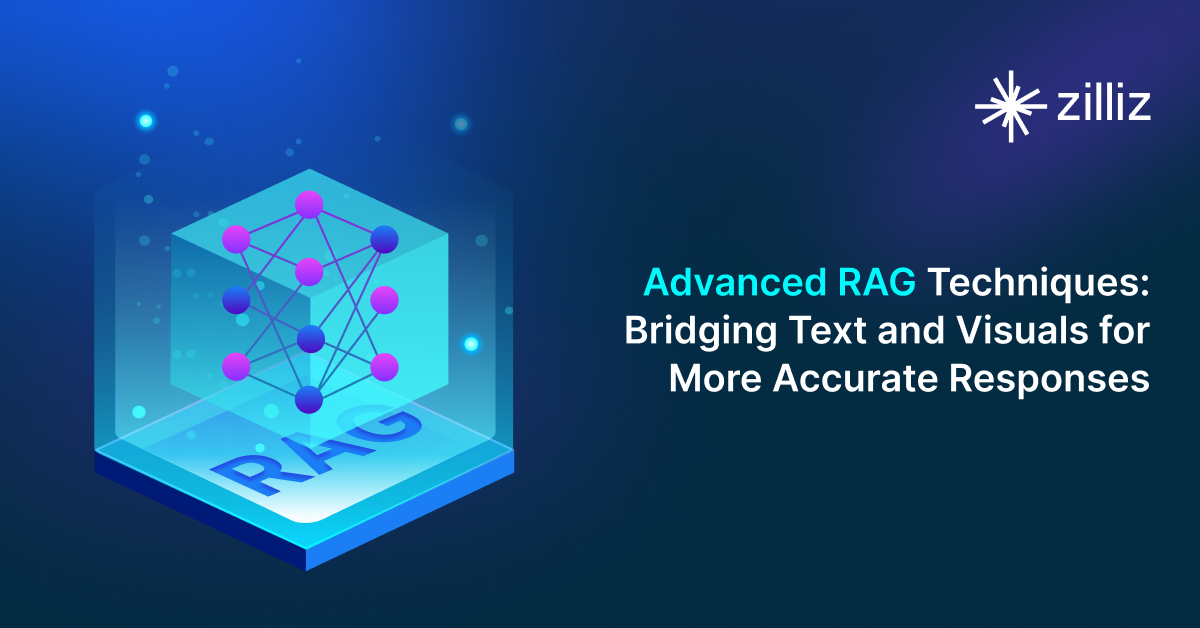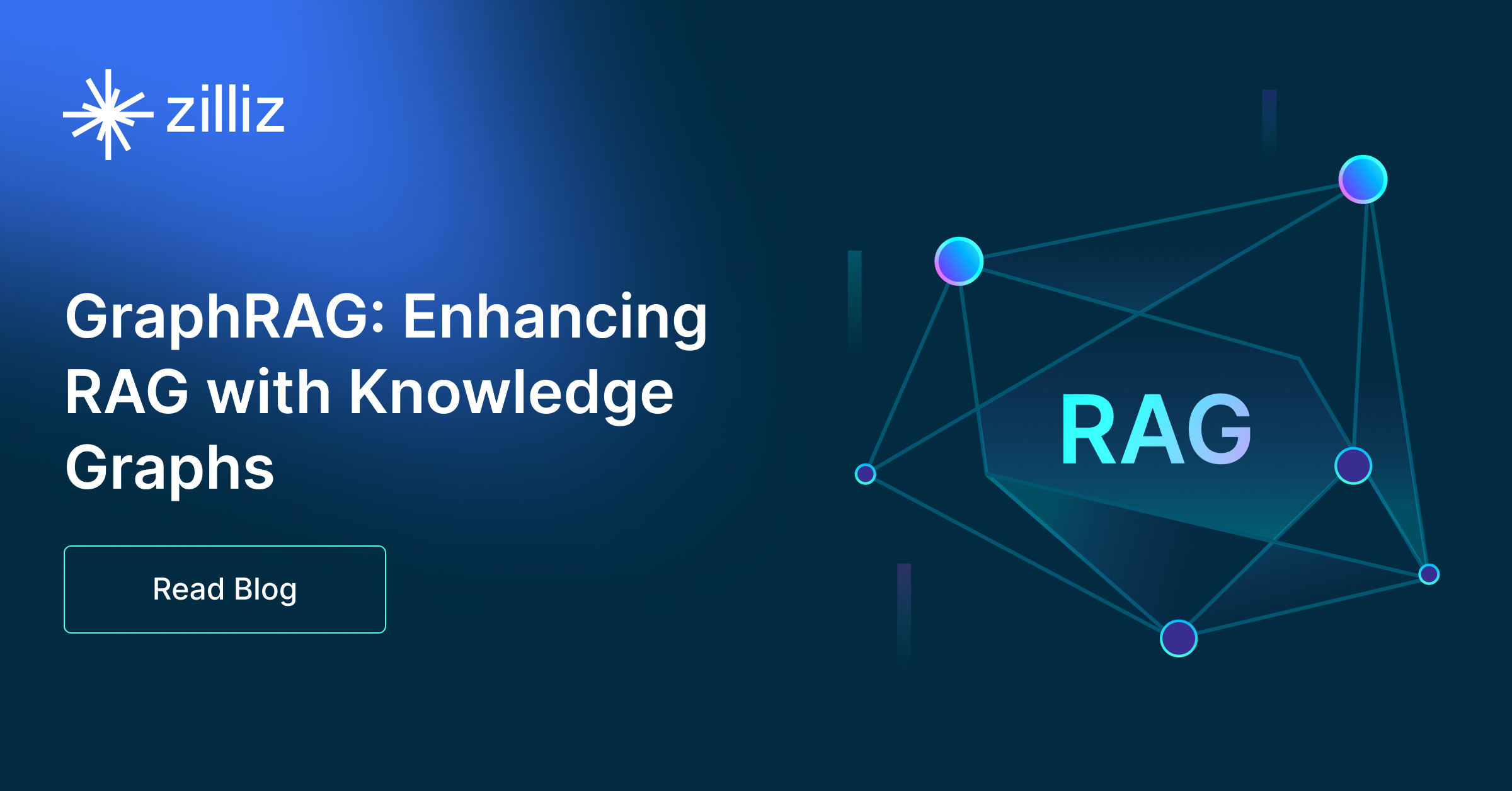Build RAG Chatbot with Llamaindex, HNSWlib, Anthropic Claude 3.5 Haiku, and voyage-3-large
Introduction to RAG
Retrieval-Augmented Generation (RAG) is a game-changer for GenAI applications, especially in conversational AI. It combines the power of pre-trained large language models (LLMs) like OpenAI’s GPT with external knowledge sources stored in vector databases such as Milvus and Zilliz Cloud, allowing for more accurate, contextually relevant, and up-to-date response generation. A RAG pipeline usually consists of four basic components: a vector database, an embedding model, an LLM, and a framework.
Key Components We'll Use for This RAG Chatbot
This tutorial shows you how to build a simple RAG chatbot in Python using the following components:
- Llamaindex: a data framework that connects large language models (LLMs) with various data sources, enabling efficient retrieval-augmented generation (RAG). It helps structure, index, and query private or external data, optimizing LLM applications for search, chatbots, and analytics.
- HNSWlib: a high-performance C++ and Python library for approximate nearest neighbor (ANN) search using the Hierarchical Navigable Small World (HNSW) algorithm. It provides fast, scalable, and efficient similarity search in high-dimensional spaces, making it ideal for vector databases and AI applications.
- Anthropic Claude 3.5 Haiku: A lightweight, high-speed AI model optimized for rapid, cost-efficient processing of complex queries. It excels in real-time applications, offering strong performance in text analysis, summarization, and multilingual tasks. Ideal for scalable enterprise solutions, dynamic customer interactions, and scenarios requiring low-latency responses without compromising accuracy.
- Voyage-3-Large: This model is designed for generative tasks, offering enhanced creativity and contextual understanding. With robust training on diverse datasets, it excels in producing coherent narratives and dialogue, making it ideal for applications in storytelling, content creation, and interactive experiences where imaginative output is essential.
By the end of this tutorial, you’ll have a functional chatbot capable of answering questions based on a custom knowledge base.
Note: Since we may use proprietary models in our tutorials, make sure you have the required API key beforehand.
Step 1: Install and Set Up Llamaindex
pip install llama-index
Step 2: Install and Set Up Anthropic Claude 3.5 Haiku
%pip install llama-index-llms-anthropic
from llama_index.llms.anthropic import Anthropic
# To customize your API key, do this
# otherwise it will lookup ANTHROPIC_API_KEY from your env variable
# llm = Anthropic(api_key="")
llm = Anthropic(model="claude-3-5-haiku-latest")
Step 3: Install and Set Up voyage-3-large
%pip install llama-index-embeddings-voyageai
from llama_index.embeddings.voyageai import VoyageEmbedding
embed_model = VoyageEmbedding(
voyage_api_key="",
model_name="voyage-3-large",
)
Step 4: Install and Set Up HNSWlib
%pip install llama-index-vector-stores-hnswlib
from llama_index.vector_stores.hnswlib import HnswlibVectorStore
from llama_index.core import (
VectorStoreIndex,
StorageContext,
SimpleDirectoryReader,
)
vector_store = HnswlibVectorStore.from_params(
space="ip",
dimension=embed_model._model.get_sentence_embedding_dimension(),
max_elements=1000,
)
Step 5: Build a RAG Chatbot
Now that you’ve set up all components, let’s start to build a simple chatbot. We’ll use the Milvus introduction doc as a private knowledge base. You can replace it with your own dataset to customize your RAG chatbot.
import requests
from llama_index.core import SimpleDirectoryReader
# load documents
url = 'https://raw.githubusercontent.com/milvus-io/milvus-docs/refs/heads/v2.5.x/site/en/about/overview.md'
example_file = 'example_file.md' # You can replace it with your own file paths.
response = requests.get(url)
with open(example_file, 'wb') as f:
f.write(response.content)
documents = SimpleDirectoryReader(
input_files=[example_file]
).load_data()
print("Document ID:", documents[0].doc_id)
storage_context = StorageContext.from_defaults(vector_store=vector_store)
index = VectorStoreIndex.from_documents(
documents, storage_context=storage_context, embed_model=embed_model
)
query_engine = index.as_query_engine(llm=llm)
res = query_engine.query("What is Milvus?") # You can replace it with your own question.
print(res)
Example output
Milvus is a high-performance, highly scalable vector database designed to operate efficiently across various environments, from personal laptops to large-scale distributed systems. It is available as both open-source software and a cloud service. Milvus excels in managing unstructured data by converting it into numerical vectors through embeddings, which facilitates fast and scalable searches and analytics. The database supports a wide range of data types and offers robust data modeling capabilities, allowing users to organize their data effectively. Additionally, Milvus provides multiple deployment options, including a lightweight version for quick prototyping and a distributed version for handling massive data scales.
Optimization Tips
As you build your RAG system, optimization is key to ensuring peak performance and efficiency. While setting up the components is an essential first step, fine-tuning each one will help you create a solution that works even better and scales seamlessly. In this section, we’ll share some practical tips for optimizing all these components, giving you the edge to build smarter, faster, and more responsive RAG applications.
LlamaIndex optimization tips
To optimize LlamaIndex for a Retrieval-Augmented Generation (RAG) setup, structure your data efficiently using hierarchical indices like tree-based or keyword-table indices for faster retrieval. Use embeddings that align with your use case to improve search relevance. Fine-tune chunk sizes to balance context length and retrieval precision. Enable caching for frequently accessed queries to enhance performance. Optimize metadata filtering to reduce unnecessary search space and improve speed. If using vector databases, ensure indexing strategies align with your query patterns. Implement async processing to handle large-scale document ingestion efficiently. Regularly monitor query performance and adjust indexing parameters as needed for optimal results.
HNSWlib optimization tips
To optimize HNSWlib for a Retrieval-Augmented Generation (RAG) setup, fine-tune the M parameter (number of connections per node) to balance accuracy and memory usage—higher values improve recall but increase indexing time. Adjust ef_construction (search depth during indexing) to enhance retrieval quality. During queries, set ef_search dynamically based on latency vs. accuracy trade-offs. Use multi-threading for faster indexing and querying. Ensure vectors are properly normalized for consistent similarity comparisons. If working with large datasets, periodically rebuild the index to maintain efficiency. Store the index on disk and load it efficiently for persistence in production environments. Monitor query performance and tweak parameters to achieve optimal speed-recall balance.
Anthropic Claude 3.5 Haiku optimization tips
Optimize context relevance by implementing semantic chunking with 512-1024 token segments and metadata filtering to reduce noise. Use structured data formatting (JSON/XML tables) for retrieved content to enhance Claude's parsing efficiency. Implement query expansion with synonyms and domain-specific terms to improve retrieval alignment. Fine-tune temperature settings (0.2-0.4 range) for factual consistency. Cache frequent query embeddings and employ prompt compression techniques like entity summarization. Monitor token usage through Claude's API metrics to balance context depth with cost efficiency, prioritizing critical information in the prompt's beginning for better attention focus.
voyage-3-large optimization tips
voyage-3-large provides enhanced reasoning capabilities, making it ideal for complex RAG tasks requiring deep contextual understanding. Optimize retrieval by implementing a multi-step ranking system that prioritizes highly relevant documents while filtering out lower-quality information. Use structured prompts with clearly delineated context and user queries to improve comprehension. Adjust temperature (0.1–0.3) and fine-tune top-k and top-p settings to maintain accuracy and prevent excessive variability. Take advantage of parallelized inference and request batching to improve processing efficiency. Leverage caching for high-frequency queries to reduce costs and latency. In multi-model setups, deploy voyage-3-large for intricate reasoning tasks while using smaller models for less complex queries to balance cost and performance effectively.
By implementing these tips across your components, you'll be able to enhance the performance and functionality of your RAG system, ensuring it’s optimized for both speed and accuracy. Keep testing, iterating, and refining your setup to stay ahead in the ever-evolving world of AI development.
RAG Cost Calculator: A Free Tool to Calculate Your Cost in Seconds
Estimating the cost of a Retrieval-Augmented Generation (RAG) pipeline involves analyzing expenses across vector storage, compute resources, and API usage. Key cost drivers include vector database queries, embedding generation, and LLM inference.
RAG Cost Calculator is a free tool that quickly estimates the cost of building a RAG pipeline, including chunking, embedding, vector storage/search, and LLM generation. It also helps you identify cost-saving opportunities and achieve up to 10x cost reduction on vector databases with the serverless option.
 Calculate your RAG cost
Calculate your RAG cost
What Have You Learned?
Wow! What an exciting journey you've just completed! In this tutorial, you've learned how to seamlessly integrate a robust framework like LlamaIndex with a powerful vector database such as HNSWlib, combined with the advanced capabilities of an LLM like Anthropic Claude 3.5 Haiku, and an embedding model like voyage-3-large. This integration allows you to build a Retrieval-Augmented Generation (RAG) system that enhances your applications, making them smarter and more efficient. You now understand how each component contributes to a more dynamic data retrieval experience, from quick document searches to generating contextual information that enriches user interactions. You've also picked up some handy optimization tips to fine-tune performance and ensure your RAG system operates at its peak!
But that’s not all—remember the free RAG cost calculator we introduced? It's a fantastic tool to help you estimate your expenses as you scale your RAG applications. With these new skills and tools at your disposal, you have the power to innovate and create applications that can truly transform user experiences. So why wait? Dive in, start building, and let your creativity soar! The world of RAG applications is ripe with opportunities, and you're now equipped to take full advantage of them. Get out there and start turning your ideas into reality!
Further Resources
🌟 In addition to this RAG tutorial, unleash your full potential with these incredible resources to level up your RAG skills.
- How to Build a Multimodal RAG | Documentation
- How to Enhance the Performance of Your RAG Pipeline
- Graph RAG with Milvus | Documentation
- How to Evaluate RAG Applications - Zilliz Learn
- Generative AI Resource Hub | Zilliz
We'd Love to Hear What You Think!
We’d love to hear your thoughts! 🌟 Leave your questions or comments below or join our vibrant Milvus Discord community to share your experiences, ask questions, or connect with thousands of AI enthusiasts. Your journey matters to us!
If you like this tutorial, show your support by giving our Milvus GitHub repo a star ⭐—it means the world to us and inspires us to keep creating! 💖
- Introduction to RAG
- Key Components We'll Use for This RAG Chatbot
- Step 1: Install and Set Up Llamaindex
- Step 2: Install and Set Up Anthropic Claude 3.5 Haiku
- Step 3: Install and Set Up voyage-3-large
- Step 4: Install and Set Up HNSWlib
- Step 5: Build a RAG Chatbot
- Optimization Tips
- RAG Cost Calculator: A Free Tool to Calculate Your Cost in Seconds
- What Have You Learned?
- Further Resources
- We'd Love to Hear What You Think!
Content
Vector Database at Scale
Zilliz Cloud is a fully-managed vector database built for scale, perfect for your RAG apps.
Try Zilliz Cloud for Free


